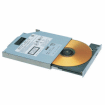FAS Computer Services to Harvard University IT: (617) 495-7777.
Floppy discs on Sun's running Solaris
|
After inserting the floppy in the drive, the command
"volcheck -v" checks for new media and mounts the floppy.
Read and write to /floppy/floppy0 as you do with any other directory.
The command "eject floppy" unmounts the floppy.
Don't forget this command before
physically ejecting the floppy.
|
Floppys on Linux
With a diskette in the drive,
"mdir A:" displays the content of the floppy,
"mformat A:" (re)formats the floppy,
"mcopy file A:" copies a file to the floppy,
"mcopy A:file ." copies a file from the floppy
to the current directory,
"mdel A:filename" deletes a file on the floppy.
Alternatively, a floppy can be mounted on some directory "dir" with
"mount /mnt/floppy dir"
and read or write to that directory "dir" as usual.
Before removing the disc, unmount it with
"umount /mnt/floppy"
Don't forget this command before
physically ejecting the disc.
Newer Linux distributions use automount to mount and unmount
floppy discs automatically.
|
CD burning under Linux
CD burning can be done with programs like "cdroast". The
task can be done much simpler however:
mkisofs -r -d -o cdimage.iso dir
creates an image of the directory "dir". This is then burned onto
the CD using
cdrecord -v speed=8 dev=6,0 cdimage.iso
The number 6 has to be replaced by the SCSII number of your CD drive.
You find out about attached SCSII devices with the command
cdrecord -scanbus
To copy a CD , use a command like
cdrecord -v dev=3,0 speed=8 -isosize /dev/hdc
where /dev/hdc is the CD-Rom containing the read CD.
|
Dos-Unix file conversion
Occasionionally you may need to use the dos2unix command to remove extra
carriage returns and change the end-of-file character to match Unix
conventions. This can be acchieved with
dos2unix -ascii originalfile convertedfile
The Unix command
tr -d "
" < originalfile > convertedfile
does the same. See the dos2unix (and unix2dos) man pages for more info.
|
